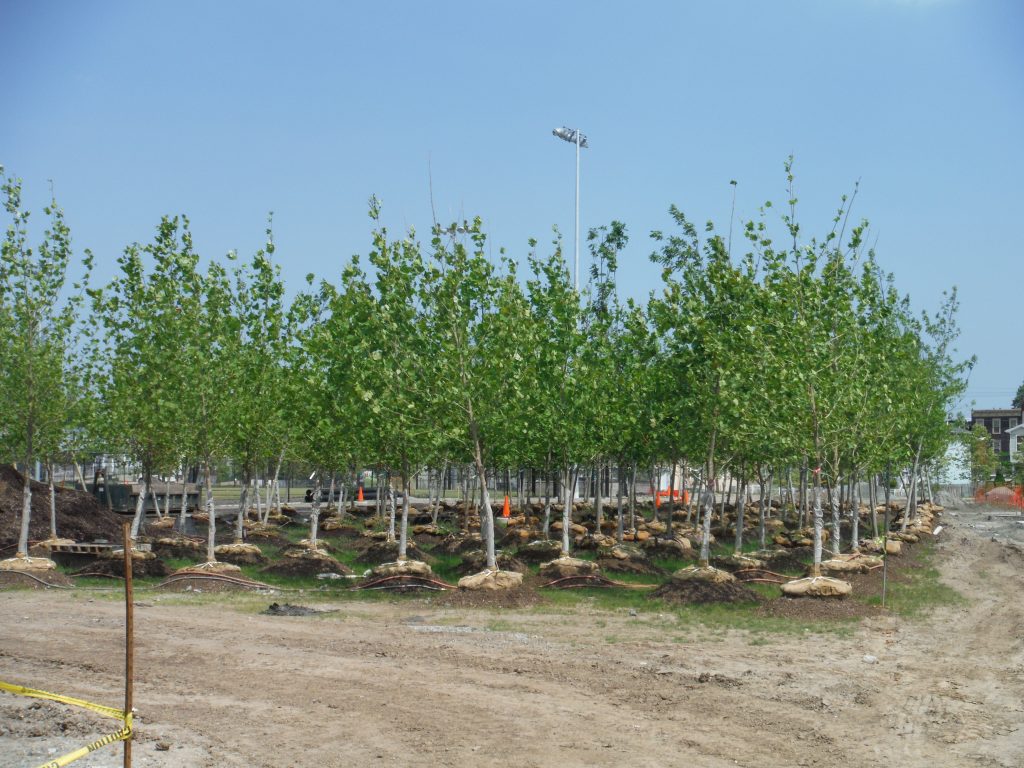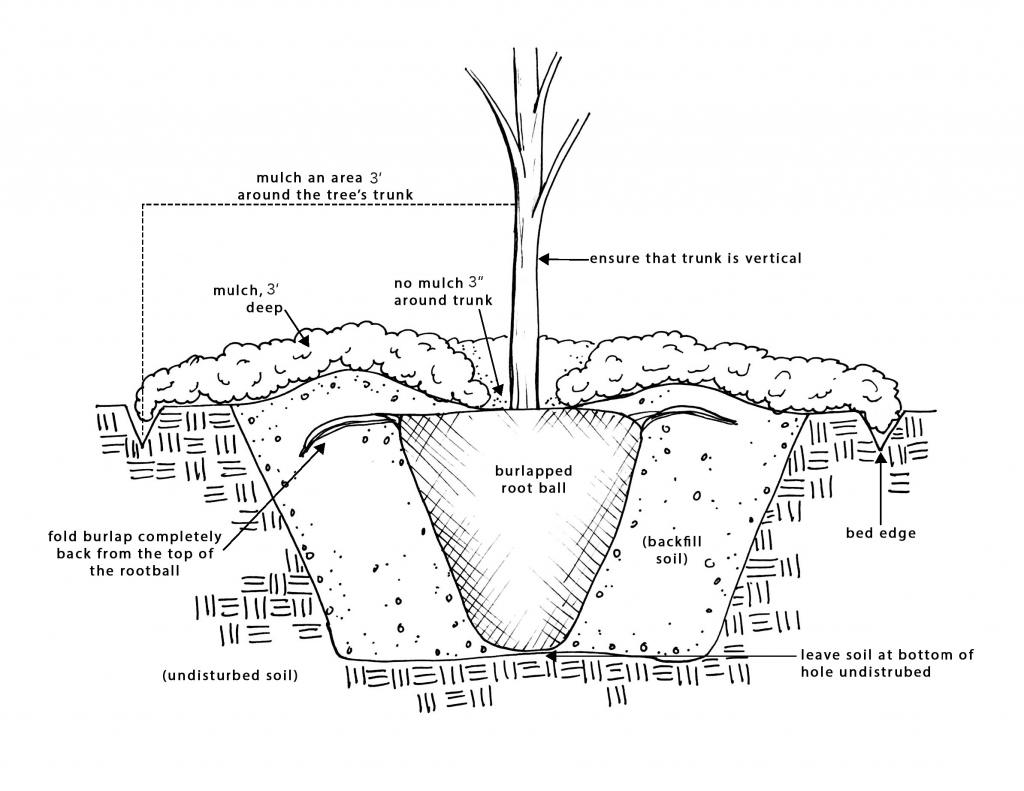
Spring is the perfect time to plant trees in your community. Cool days and ample rain help the new tree become established without the threat of summer droughts or winter freezes. Planting tips to help your tree get off to a good start:
- Choose trees that will tolerate the site conditions (urban pollution, salty air, compacted soils, etc.) Be mindful of power lines and how large the tree’s canopy will become.
- Purchase trees from reputable nurseries and make sure roots are intact and have been kept moist, there is no damage to the trunk, and that the tree has a strong main branch. Bare root trees are best as long as they can be planted immediately.
- It is best not to amend the soils in the planting hole with fertilizers and compost. Filling the hole with “good” soils will cause the tree roots to remain in the planting hole instead of branching out into the large root structure that the tree will need for stability and for water and nutrient uptake in the long run.
- Double-check that all wires and tags are removed from the tree. If these are left on, they will girdled the tree as it grows, eventually cutting off the tree’s supply of water and nutrients and creating a weak point susceptible to breakage.
- Ensure that the point where the root meets the trunk of the tree is above ground level. To account for soil settling that will occur over time, it is best to never dig the planting hole deeper than the new tree’s roots, and to plant a few inches higher than you think you need to.
- Mulch around the newly planted tree with organic material that is at least partially composted. Fresh wood chips will deplete the soils of vital nutrients. Use the 3-3-3 rule: Three feet around the tree, three inches deep, and three inches from the trunk of the tree.
- Staking is not usually necessary. Your new tree may seem small and fragile, but staking will prevent the tree from growing the thick trunk it will need to withstand strong winds as it grows.
- Have a plan for watering and other maintenance – find a neighborhood champion or community organization. Tree gators (the unsightly plastic bags that slowly release water) are not recommended – these bags still need to be filled with water at the same rate, plus they block any rainwater from reaching where trees need it most – on the new roots closest to the tree.
Enjoy the new trees and the many benefits it will bring to open and underutilized spaces in your community!



